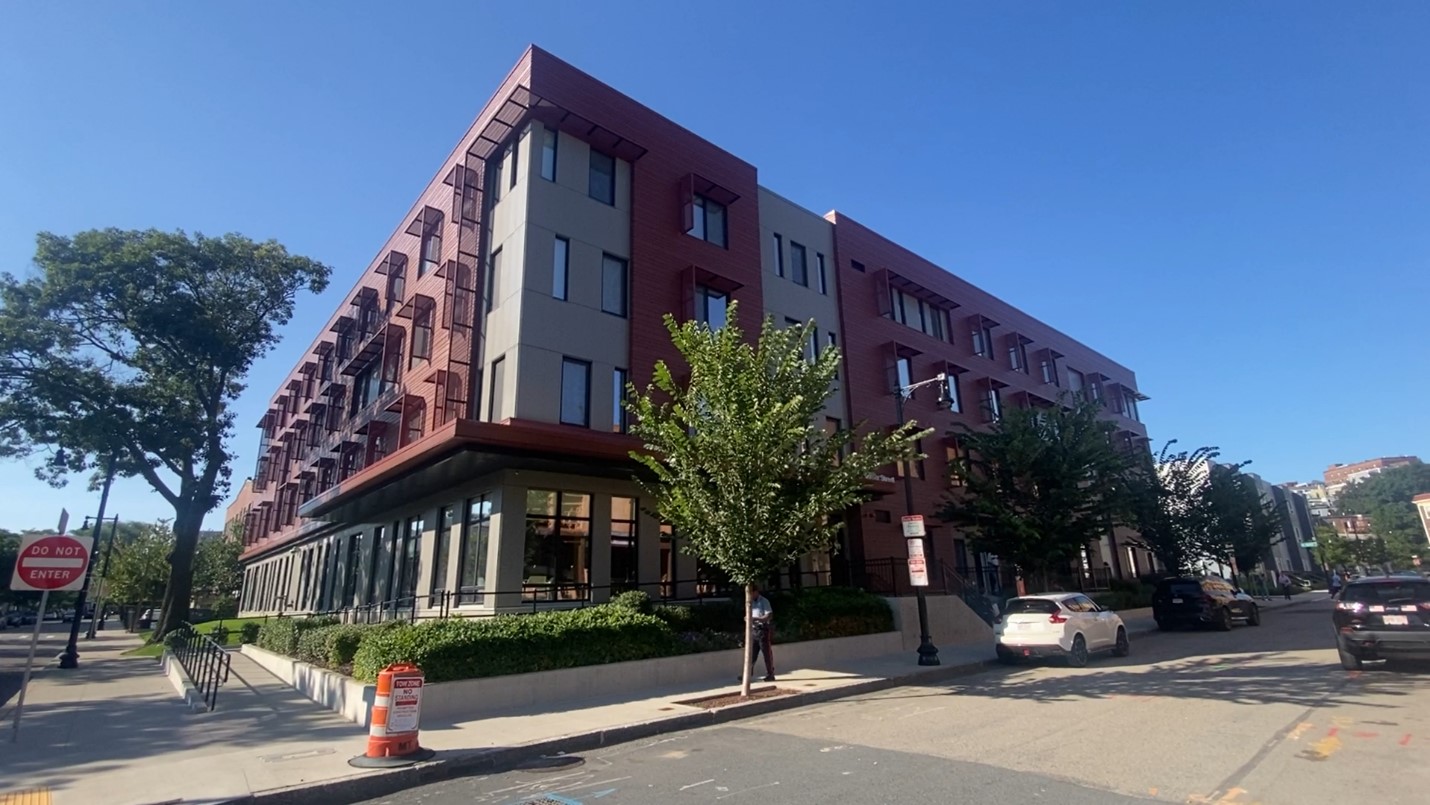Extreme storms, inland flooding, rising heat and wildfires are all among the most significant hazards facing Massachusetts in the face of a changing climate, according to a sweeping new resiliency plan that calls for nearly 150 actions to combat the weather trends — for many Bay Staters, though, these threats have already turned lives upside down.
The ResilientMass Plan was released this month, and calls for everything from updating building codes, to looking into a buyout program for high-risk areas, to overhauling MBTA design standards with climate resilience on all new construction and retrofits.
Plus, the state is launching a new Office of Climate Science to help with its wide-ranging plan to mitigate Massachusetts' climate risks.
While leaders plan for what the future will bring, many people in storm-ravaged communities are in recovery mode already, and need help now.
Get Boston local news, weather forecasts, lifestyle and entertainment stories to your inbox. Sign up for NBC Boston’s newsletters.
'Everything we just worked for is gone'
On the evening of Sept. 11, the central Massachusetts city of Leominster would endure historic rain — around 10 inches of it — leading to intense flooding, washed out roads and damaged dams. Businesses and homes were overrun with water, in a flooding event Gov. Maura Healey declared a state of emergency over, calling the situation a "catastrophic" one.
A little over a month later, and people in the community are still struggling — people like Zack and Hannah Burchell.
Their basement living space in Zack's childhood home on Abbott Avenue has been gutted out, after the water from September's storm burst through the windows. The water was five feet deep inside their home.
"I was here with our two daughters, and we were downstairs in our rooms," Hannah said. "The water started to come in from the floor, so I put our baby in our crib... It was like two minutes before I realized I was in way over my head trying to stop the water from coming in."
Hannah grabbed her two daughters and brought them to a higher floor, and when she went back downstairs, the crib had tipped over as water poured in.
"At that point I just had to grab what I could and save what I could of our stuff and get out of there," Hannah said. "I just sat there thinking, 'What am I supposed to do?'"
Inside the Burchells' home following September storm
The ordeal was traumatizing for their six-year-old daughter, who is troubled by rain and by returning to the home. The family has been staying in Hudson in accommodations provided by Zack's employer, but time there is running out — and the Burchells are still waiting for answers.
"I think we were hoping the city maybe would've given us more attention here just because we have had the preexisting issues, and the city is well aware of the issues we've been going through for two years now," Hannah said, referring to a wetland adjacent to their property. "And because of those issues, that is why our damage was so terrible."
The couple did not have flood insurance, and they said their home insurance would not provide any coverage — only a denial letter the couple may use to apply for aid through FEMA. They estimate the damage to cost up to $250,000, and are hopeful for help through the government.
"It's kind of hard to wrap our heads around," Zack said. "Where everything is moving so slowly, there aren't a lot of answers, we're just kind of in limbo right now. We're just waiting to get a response from someone."
Leominster Mayor Dean Mazzarella said that the process of having a disaster declared by FEMA is a lengthy and thorough one. He said the city has made major progress over the years in its resilience efforts, yet nothing could have totally protected the the historic storm that stalled over Leominster in September.
On the other side of Route 2 in Leominster, John Shea is also still in recovery, after several inches of water invaded his finished basement.
While he's making repairs, he is also installing new systems to protect his property against future floods; those measures included shoring up his fieldstone foundation and installing a French drain system.
"We could sort of band-aid and fix the problem at hand, which was maybe tearing out some floor, replacing some dry wall, but let's just say this happens again a year from now," Shea said. "I wanted to make sure this wasn't going to be an incident again."
Changing weather in Massachusetts
State officials involved in the development in the ResilientMass Plan said that this summer's extreme weather — which dominated headlines with torrential rainfall, flooding and tornadoes — was "indicative of the more extreme weather we are going to see with climate change."
Undersecretary for Decarbonization and Resilience at the Mass. Executive Office of Energy and Environmental Affairs, Katherine Antos, as well as Hazard Mitigation and Climate Adaptation Coordinator for the Mass. Emergency Management Agency, Marybeth Groff, walked through the new plan during an interview with NBC10 Boston.
"What this plan is about is looking at what are the impacts of climate change specifically to Massachusetts — we know it's going to get hotter, and wetter and that weather is going to be more extreme," Antos said. "And we looked across all of our executive agencies to say what can we do to reduce the risk."
Those risks are outlined in the report, which identified inland flooding "as the most significant climate hazard in Massachusetts."
The greatest hazard risks were identified as the following:
- Coastal erosion
- Coastal flooding and sea level rise
- Extreme storms
- Flooding from precipitation
- High heat
- Changes in groundwater
- Invasive species
- Wildfire
"By 2050, we expect the number of days over 90 degrees to increase six fold," Antos said. "The extreme precipitation that we saw in Leominster, at this point, that’s a 1 in a 500 year storm. But by 2090, we expect that type of storm is going to become 10 times more likely to occur. In addition to weather, we know that sea level is rising. And so by 2050, we expect a 2.5 foot increase in sea level."
Chief meteorologist at NBC10 Boston Matt Noyes said he's seen weather shift first hand, during his two decades forecasting in New England.
"There's actually signals that, what we're seeing with climate change is a change in the weather pattern to more extremes," Noyes said. "Studies of precipitation have shown that we get more in the way of heavy precipitation events, even if we don't get as many days that feature rain. So you may go through a period of drought for a few months, and then you may go through a period of really intense rain after that."
Noyes said that scientists have a lot to still research in the coming decades.
"To what extent has the climate been changing because of what we as humans have been doing," Noyes said. "And we know that to some extent certainly that's been a contributor — to what extent has that been a contributor, and to what extent has there been nature that's been going through some typical cycles."
One definite human activity is building, and Noyes explained that where people build can have a big impact on flooding impacts.
"We now are building larger, more expensive properties at the coast than we ever have before — we're packing more population into the coast than we ever have before," Noyes said. "And this puts us very much at risk to storms coming in off the ocean, compared even to where we are 50 years ago."
Plus, Noyes said that many areas that have seen significant inland flooding were built on areas that previously were marshes.
"We've put ourselves more vulnerable and more at risk than we ever have been before," Noyes said.
A call to action in the Bay State
In response to the risk facing communities across the Commonwealth, officials hope their plan gives everyone the resources and knowledge necessary to prevent, prepare and respond to hazards, as well as outline the dozens of projects being taken on by the state in the name of resilience.
The Office of Climate Science that's forming will play a big role in that — it's aimed at gathering information and ensuring that state agencies and municipalities across the state are using it consistanly.
"It's important that everyone understands what the risks and vulnerabilities are across the Commonwealth, so this is the opportunity to provide that information and data so everyone who needs to respond and needs to protect lives is able to do that," Groff said. "And do it from the same sheet of music, so to speak, because everyone has the same data and information."
The 142 actions outlined in the plan are all aligned with mitigating specific hazards, in many instances several of them per action. An outline tracker shows the progress made toward each action.
Here are a few of the actions highlighted in the plan, broken up by the climate challenges they address or the overarching state goals they help to work toward:
- Coastal flooding and coastal erosion
- Develop a coastal resilience strategy
- Launch an acquisition/buyout program study
- Develop best practices for redesign of seawalls and revetments
- Extreme storms
- Update the MBTA's emergency response plans and GIS viewer for real-time storm respinse
- MBTA design standards update
- Statewide emergency management training needs assessment
- Flooding from precipitation
- Enhance consideration of resilience in building code
- Protect 30% of land and ocean by 2030
- Integrate DCR's stormwater best management practices into DCR's design review process
- High heat
- Develop and implement a new Heat Flag system
- Identify opportunities to improve cooling standards in buildings to address extreme heat impacts
- Inventory, categorize and strategically improve shade shelters and cooling structures on DCR sites, prioritizing environmental justice communities
- Provide funding and technical assistance
- Increase funding to support municipal and agency resilience actions and funding
- Expand evaluation of climate resilience for state capital investments
- Develop a strategy to identify resilience funding needs and leverage federal funding to support adaptation projects
- Provide municipal and local health climate equity training and technical support
- Convene, communicate and prioritize
- Launch an Office of Climate Science
- Convene a climate resilience stakeholder working group
- Launch a statewide Climate Communications Campaign
- Update school curriculum to include climate science and green workforce development
- Plan, regulate and demonstrate
- Implement a resilience strategy at state-aided public housing
- Develop a framework for statewide resilience progress tracking
- Incorporate climate resilience into the Commonwealth's sustainable development principles
- Update Chapter 91 regulations to improve resiliency of public tidelands and waterways
- Formalize MEPA resilience policy to ensure consideration of climate change
- Conduct a climate migration assessment
"We know that there’s going to be more of these extreme events, that’s also why we’re working hard as a state to reduce our greenhouse gases, emissions, so we can fend off the most extreme impacts of climate change," Antos said. "What the ResilientMass plan does is tell us how are we going to respond, how are we going to reduce that risk, how are we going to help our cities and towns be more resilient in the face of climate change."



